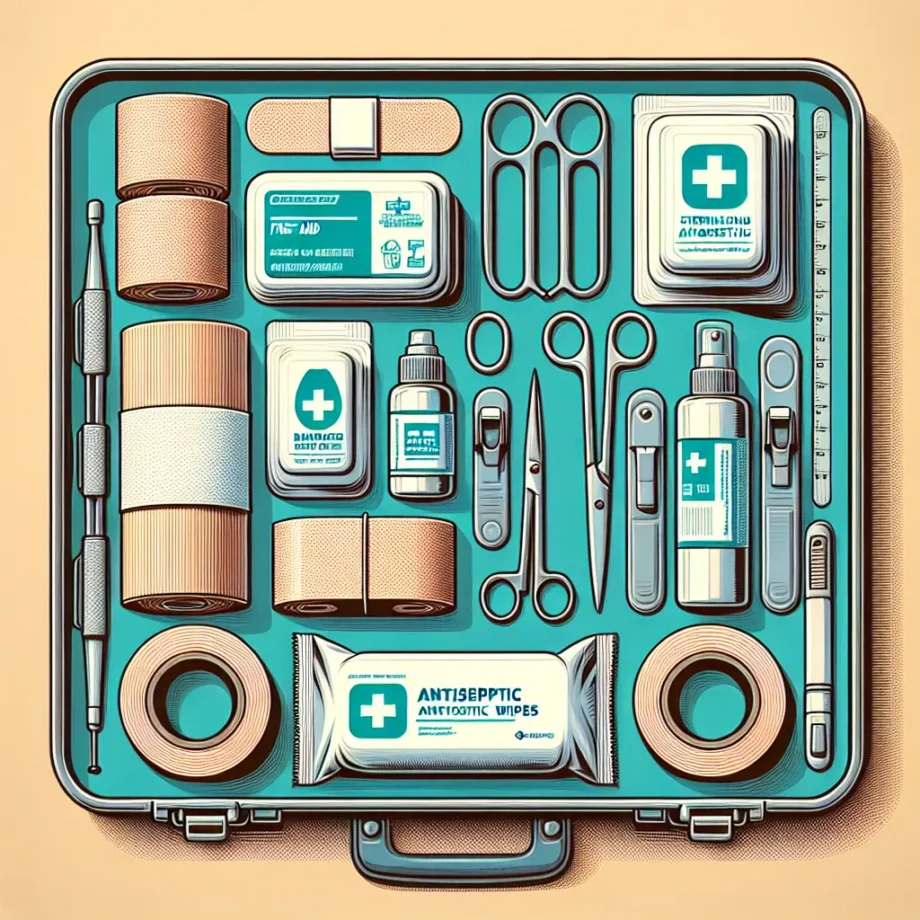Top 10 Essential Items for Every First Aid Kit
When it comes to first aid kits, there are certain essential items that should always be included to ensure you are prepared for any minor injuries or emergencies. Whether you are at home, in the car, or out hiking, having a well-stocked first aid kit can make all the difference. Here are the top 10 essential items that should be in every first aid kit:
- Adhesive bandages: These are essential for covering small cuts and scrapes to protect them from dirt and bacteria.
- Antiseptic wipes: Cleaning wounds is crucial to prevent infection, so antiseptic wipes are a must-have item.
- Gauze pads: Use these to cover larger wounds and help stop bleeding.
- Adhesive tape: Essential for securing gauze and bandages in place.
- Scissors: To cut clothing or bandages if needed.
- Tweezers: Useful for removing splinters or debris from wounds.
- Instant cold packs: These can help reduce swelling and provide relief for minor burns and injuries.
- Non-latex gloves: Protect yourself and the person you are helping by wearing gloves when providing first aid.
- Pain relievers: Include over-the-counter pain relievers like acetaminophen or ibuprofen.
- First aid manual: A guide on how to provide first aid can be extremely valuable, especially for those with limited medical knowledge.
Having these essential items in your first aid kit can ensure that you are prepared for a wide range of minor injuries and emergencies. It’s important to regularly check your kit and replenish any items that have been used or have expired to ensure its effectiveness when needed.
Must-Have Medical Supplies: A Complete Guide
When it comes to creating an aid kit, having the right medical supplies is essential for handling emergencies and providing basic care. Here’s a complete guide to the must-have medical supplies for your aid kit. First and foremost, having adhesive bandages in various sizes is crucial for covering small cuts and wounds. Additionally, sterile gauze pads and adhesive tape are vital for dressing larger wounds and controlling bleeding.
Furthermore, including alcohol wipes, hydrogen peroxide, and antiseptic ointment can help prevent infections and promote healing. It’s also important to have a digital thermometer, tweezers, and sharp scissors in your kit for assessing and treating injuries. Essential medications such as pain relievers, antihistamines, and anti-diarrheal drugs should also be included.
For more serious situations, having a CPR mask, instant cold packs, and a first-aid manual can provide necessary support before professional help arrives. Don’t forget to include personal items like gloves and a list of emergency contacts. Lastly, regularly check and update your aid kit to ensure that all supplies are in good condition and within their expiration dates. By following these guidelines and assembling the necessary medical supplies, you’ll be well-prepared to handle various health concerns and emergencies.
Building the Ultimate First Aid Kit: Essential Items and Tips
When it comes to building the ultimate first aid kit, it’s crucial to include essential items that can address a wide range of medical needs. Whether you’re creating a first aid kit for your home, car, or outdoor adventures, there are key items that should never be overlooked. One of the most important components of a first aid kit is a variety of bandages, including adhesive bandages, gauze pads, and adhesive tape. These items are essential for covering and protecting wounds of all sizes.
In addition to bandages, it’s vital to include antiseptic wipes or sprays to clean and disinfect cuts and scrapes. These items help prevent infection and promote proper wound healing. Another critical inclusion is a pair of sharp scissors and tweezers, which can be used to cut bandages, remove splinters, and perform other essential tasks. Additionally, including a digital thermometer, pain relievers, and antihistamines can help address a variety of common medical issues.
Aside from specific items, it’s important to regularly check and update your first aid kit to ensure that all items are in good condition and have not expired. Furthermore, it’s crucial to keep your first aid kit in a well-organized and easily accessible container. Consider using a waterproof and durable case for outdoor activities to protect the contents from environmental elements.
By assembling a first aid kit that includes these essential items and incorporating these tips, you can be better prepared to handle unexpected medical situations in any setting.
